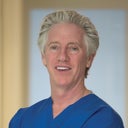Posted underEyelid Surgery q&a
Ptosis treatment? I've already gone through 2 surgeries: Fasanella Servat Procedure in 2009 and Levator Resection in 2011 (photo
Eyelid drooping started in 2003-2004 because of medicine (acetaminophen) allergy. I feel it has gotten even worst after surgery. I could sometime feel eyelid heaviness on my eyeball. I have few specific questions while I am researching my options: 1) What are my treatment options, keeping in mind that I have already had 2 surgeries? What is the success rate of each suggested treatment? 2) Why do I feel heaviness on my eyeball after those 2 surgeries? 3) Does Ptosis get worst with age?
Answers (5)
From board-certified doctors and trusted medical professionals

Dr. Kenneth D. Steinsapir, MD
Oculoplastic Surgeon, Board Certified in Ophthalmology
Answer

Dr. Mehryar (Ray) Taban, MD, FACS
Oculoplastic Surgeon, Board Certified in Ophthalmology
Answer

Dr. Daniel Ezra, MD, FRCS
Oculoplastic Surgeon, Specialist Registered in Ophthalmology
Answer

Dr. John J. Martin, Jr., MD
Oculoplastic Surgeon, Board Certified in Ophthalmology
Answer
Dr. Sara A. Kaltreider, MD (retired)
Oculoplastic Surgeon, Board Certified in Ophthalmology
Answer
More Eyelid Surgery Questions
See all Eyelid Surgery Q&AWE SEND PRETTY
EMAILS
What’s trending? Who’s turning heads? Which TikTok myths need busting? We’ve got you. No fluff, no gatekeeping—just real talk. Get our free, unfiltered newsletter.